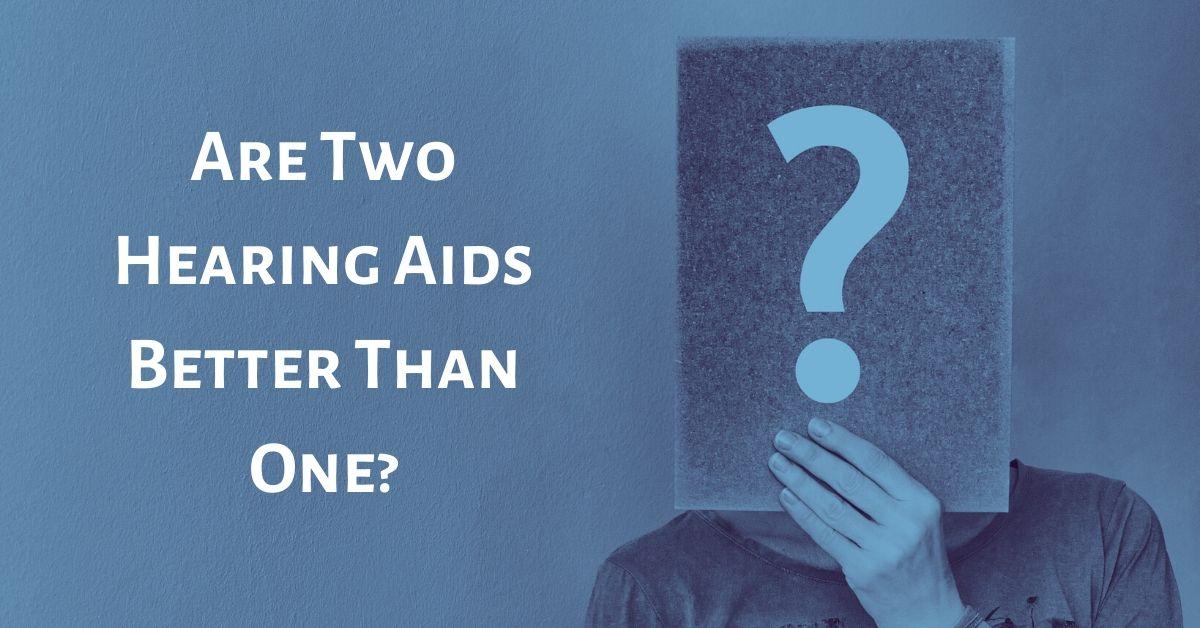Some of us know without a doubt that we have hearing loss in both ears. With similar levels of noise exposure over a lifetime it only makes sense that both ears would suffer similar levels of damage over time. However, others can tell that only one ear has serious hearing loss or that the degrees of hearing loss are quite different between the two ears.
If you find yourself asking others to speak into your “good ear,” then you might wonder if getting just one hearing aid is an option. The first important step is to get a thorough hearing exam by a licensed hearing professional. You might have hearing loss in both ears, even if the amount of loss is asymmetrical. The precise hearing profile will determine what hearing needs you have in each ear, and your hearing professional can prescribe the right type of hearing aids to suit your needs.
What if your hearing test comes back and you only have hearing loss in one ear? Is it appropriate to get only one hearing aid?
The Benefits of Two Hearing Aids
Although you might be tempted to cut the cost and hassle by getting only one hearing aid rather than two, hearing professionals will recommend getting two hearing aids. The benefits of two aids rather than one come in many forms—some practical, some preventative, and some in terms of audio quality.
In the first case, getting two matching hearing aids has some practical benefits. Although you might have hearing loss isolated to one ear, as time goes by it is likely to develop hearing loss in that other ear. Even when the loss is subtle, it will be important to match the decibel level in order to orient to your surroundings.
Our hearing is used for communication, indeed, but it is also essential for balance and equilibrium. When there are subtle differences between the two ears, our ability to sense the direction and position of sound can be compromised. In terms of preventative reasons, having both hearing aids can keep you from setting the amplification level so high in the single aid. It might seem counterintuitive, but setting the amplification level very high in one hearing aid can also cause some damage.
Additionally, you will be able to limit the summed volume level and avoid projecting more volume than you need. Perhaps the most important benefit of wearing two hearing aids rather than one has to do with sound quality. Our ears work together as a single binaural unit, combining what we hear in each ear into a simulation of a single sound.
As you might have guessed, using only one hearing aid can lead to confusing territory when the sounds are so different. Speech recognition is particularly difficult with only one hearing aid in use, and using two hearing aids makes it possible to contextualize outside sound and room noise when you are trying to focus on a single voice.
Stepping into the World of Hearing Assistance
Once you have your hearing test complete, the next step is to work with our team to assess your lifestyle needs. Through consultation you will be able to explain the times when hearing is most difficult and particular activities that are unique to your lifestyle. With this knowledge, we can prescribe a set of hearing aids that are suited to your needs.
In most cases, two hearing aids will be prescribed, for the reasons explained above. Within the range of hearing aids that are available, an ever-expanding array of features are available. Not only can your hearing aids enable you to sync with media such as music or the television, but many are also Bluetooth compatible.
With this connectivity, you can use your hearing aids with modification through smartphone apps, as well, enabling you to set not only the volume level without manual adjustment but also to adjust to the hearing profile in the environment. If these features are not of interest to you, simple models are still available with streamlined hearing service, but many do find these new features appealing. With new features available each day, having both hearing aids in place is crucial to get the most out of the device.

